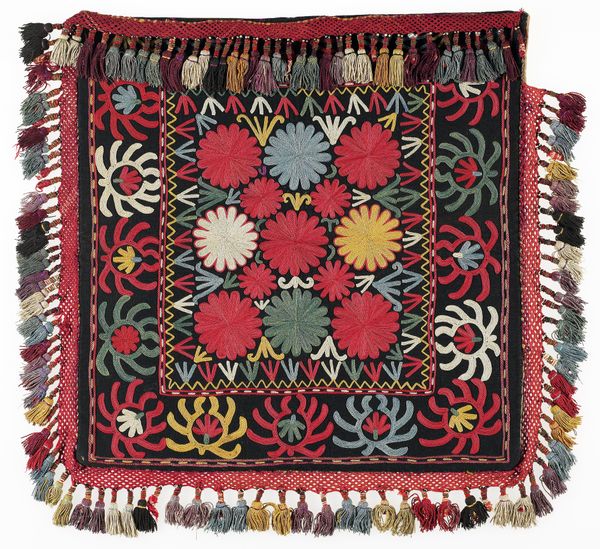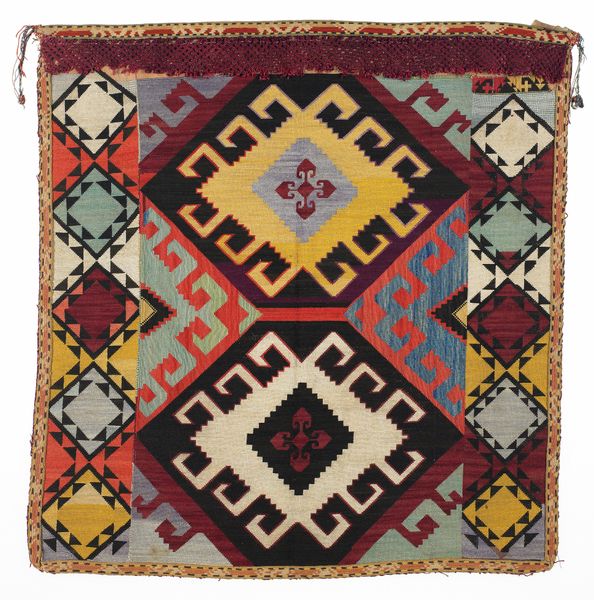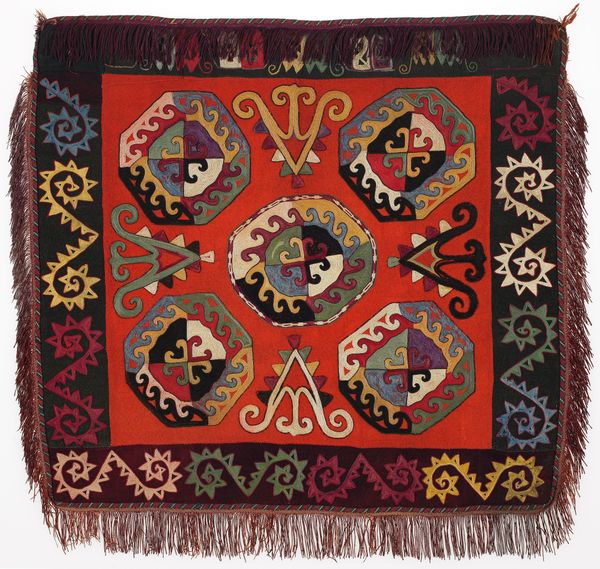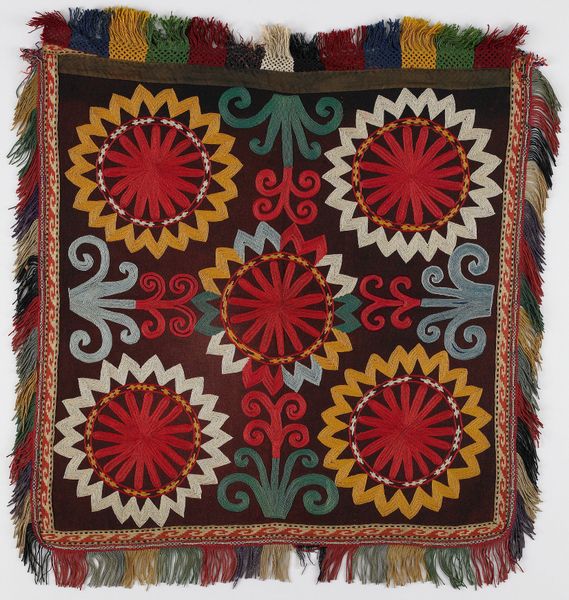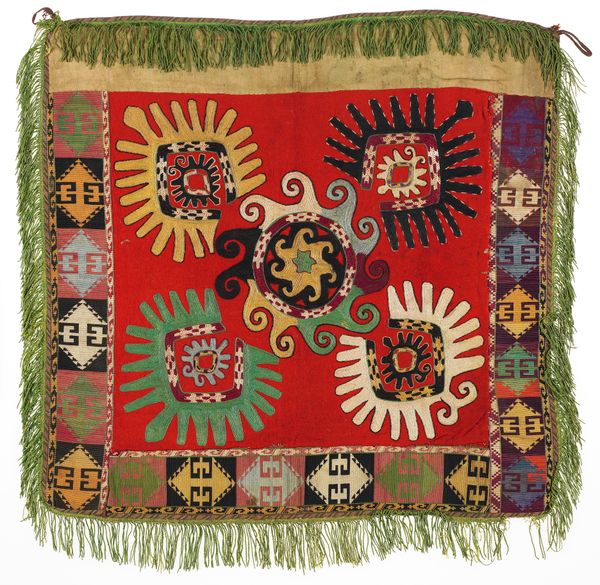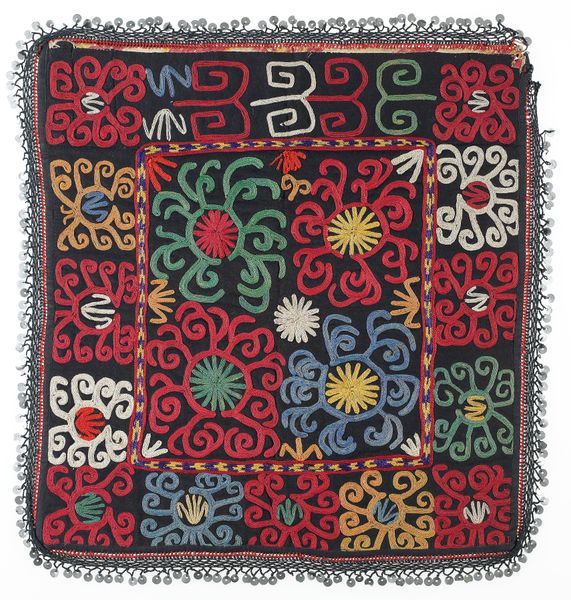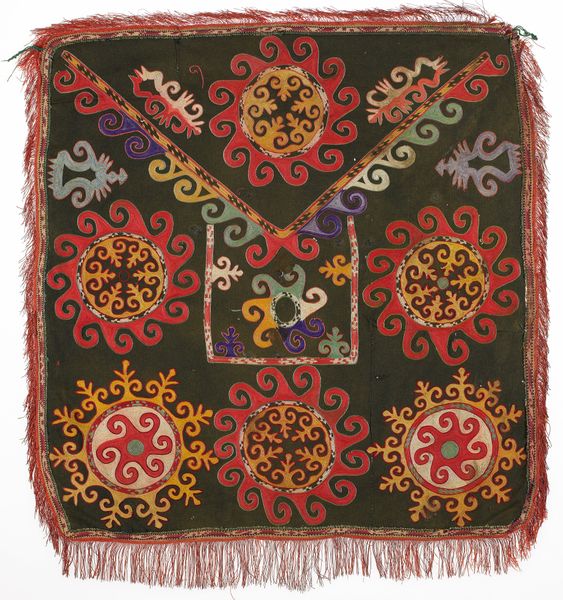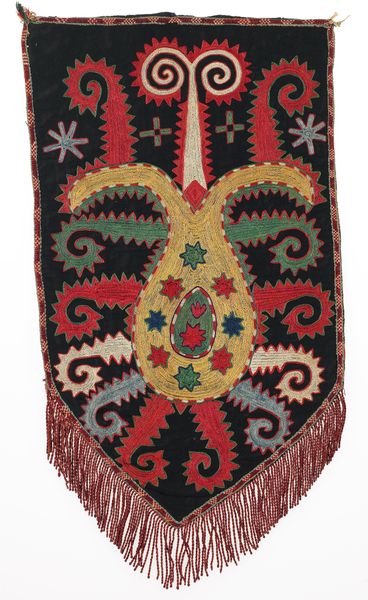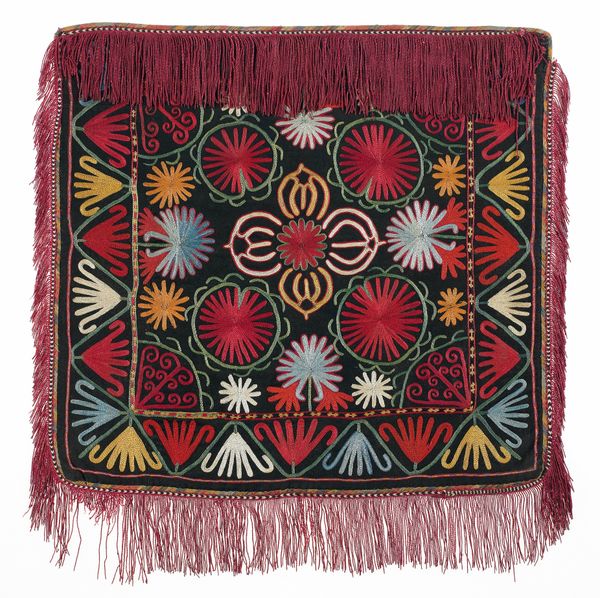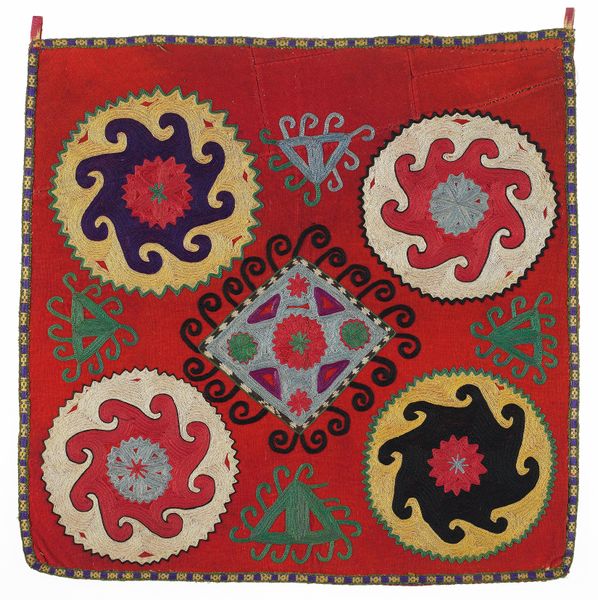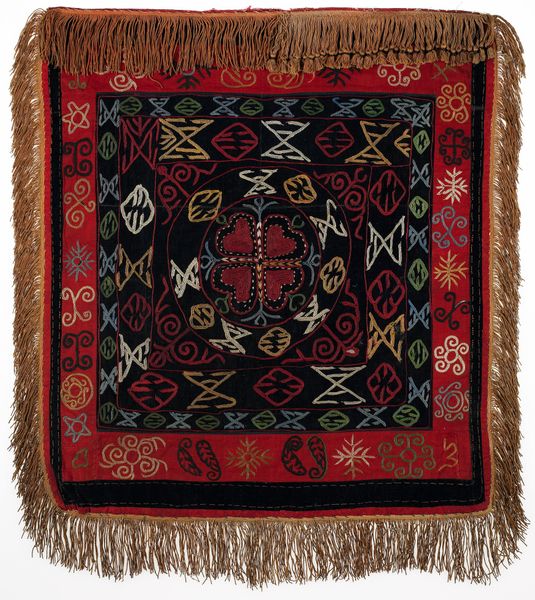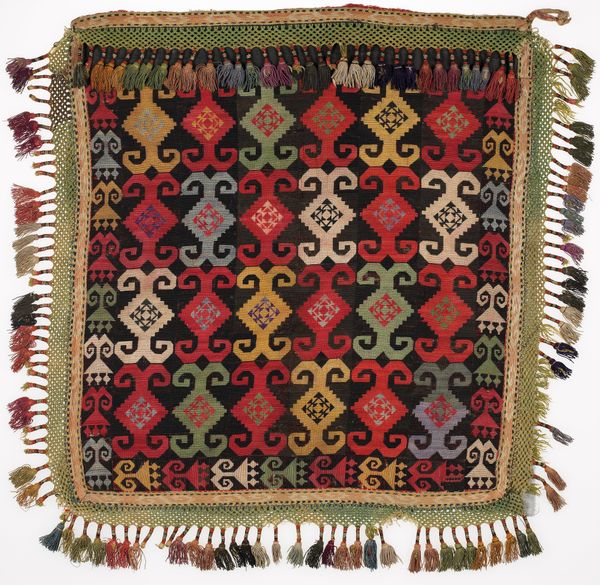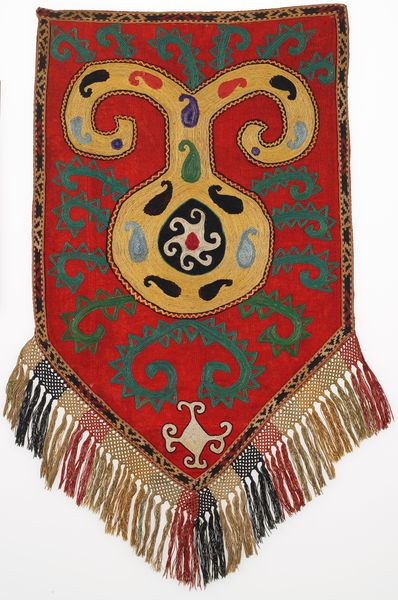
fibre-art, silk, weaving, textile, cotton
#
pattern heavy
#
pattern-and-decoration
#
fibre-art
#
silk
#
weaving
#
textile
#
fashion and textile design
#
pattern background
#
pattern design
#
geometric
#
repetition of pattern
#
regular pattern
#
pattern repetition
#
cotton
#
islamic-art
#
textile design
#
decorative-art
#
layered pattern
#
combined pattern
Dimensions: 30 x 30 in. (76.2 x 76.2 cm) (Including tassels)
Copyright: Public Domain
Curator: Immediately striking! The color and repetition in this textile is wonderful! Editor: Indeed! Let's delve into this piece. What we have here is "Ilgich," a textile from the late 19th century, likely woven in Central Asia. It is composed of silk, cotton, and other fibres, employing weaving techniques to create its intricate surface. Curator: The central motif, that distinctive pear or perhaps leaf-shaped emblem, recurs throughout the weaving traditions of the region. Does it signify something specific? Editor: Iconographically speaking, it could represent fertility or growth – such forms often do in textile art. Consider, also, its resemblance to boteh or paisley, suggesting possible links to Persian symbolism filtered through cultural exchange along the Silk Road. Curator: And the use of materials surely communicates a complex set of social cues, this textile's worth to those who made it. What can we infer about its making? Look at that vibrant red—was that cochineal? And that knotwork on the border implies skilled labor... Editor: You’re right, it suggests significant expertise. The tight weave and elaborate border are no accident. These indicate careful and specialized labor in crafting the textile, possibly pointing to a division of labor within a family or community enterprise. These colors were also valuable! Curator: Absolutely. And if we consider the repetitive geometric forms framing the piece—how do they reinforce, or perhaps challenge, the textile’s presumed symbolism? Editor: That structured repetition might serve as a reminder of the cyclical nature of life, the changing of the seasons, even the ebb and flow of human events. And it might signal something about what the object does. Curator: What do you mean by that? Editor: Consider its dimensions and robustness of manufacture. Maybe it was made to cushion someone as they performed their ritual devotions. Curator: All compelling thoughts. Looking at it afresh, I now notice a calculated use of negative space that emphasizes certain elements, prompting me to value anew the maker's intentional hand. Editor: Indeed, each thread tells a tale! It seems that textiles such as this 'Ilgich' carry a remarkable power to both reflect and shape their surrounding culture.
Comments
No comments
Be the first to comment and join the conversation on the ultimate creative platform.
